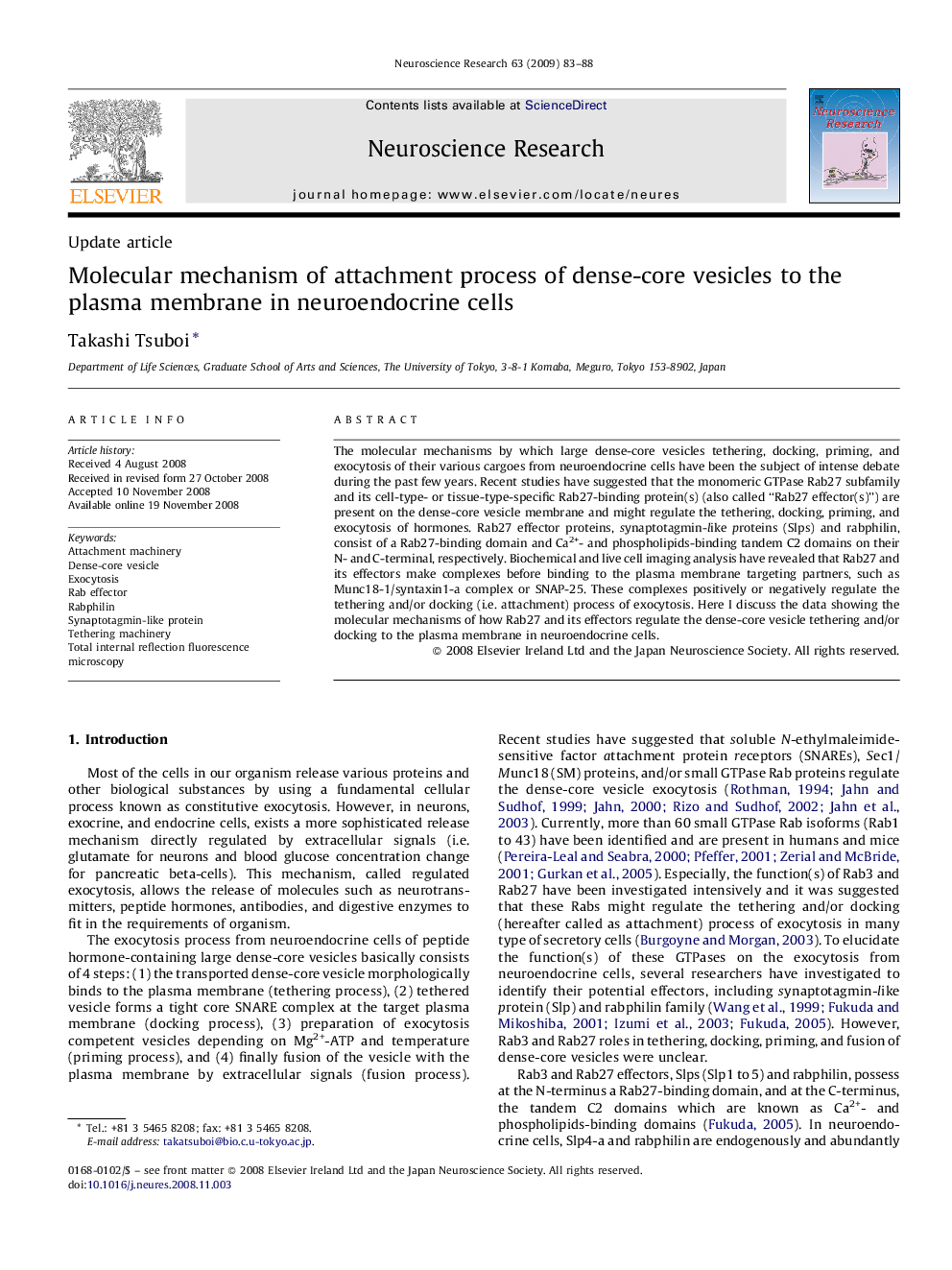| کد مقاله | کد نشریه | سال انتشار | مقاله انگلیسی | نسخه تمام متن |
|---|---|---|---|---|
| 4351709 | 1298078 | 2009 | 6 صفحه PDF | دانلود رایگان |

The molecular mechanisms by which large dense-core vesicles tethering, docking, priming, and exocytosis of their various cargoes from neuroendocrine cells have been the subject of intense debate during the past few years. Recent studies have suggested that the monomeric GTPase Rab27 subfamily and its cell-type- or tissue-type-specific Rab27-binding protein(s) (also called “Rab27 effector(s)”) are present on the dense-core vesicle membrane and might regulate the tethering, docking, priming, and exocytosis of hormones. Rab27 effector proteins, synaptotagmin-like proteins (Slps) and rabphilin, consist of a Rab27-binding domain and Ca2+- and phospholipids-binding tandem C2 domains on their N- and C-terminal, respectively. Biochemical and live cell imaging analysis have revealed that Rab27 and its effectors make complexes before binding to the plasma membrane targeting partners, such as Munc18-1/syntaxin1-a complex or SNAP-25. These complexes positively or negatively regulate the tethering and/or docking (i.e. attachment) process of exocytosis. Here I discuss the data showing the molecular mechanisms of how Rab27 and its effectors regulate the dense-core vesicle tethering and/or docking to the plasma membrane in neuroendocrine cells.
Journal: Neuroscience Research - Volume 63, Issue 2, February 2009, Pages 83–88